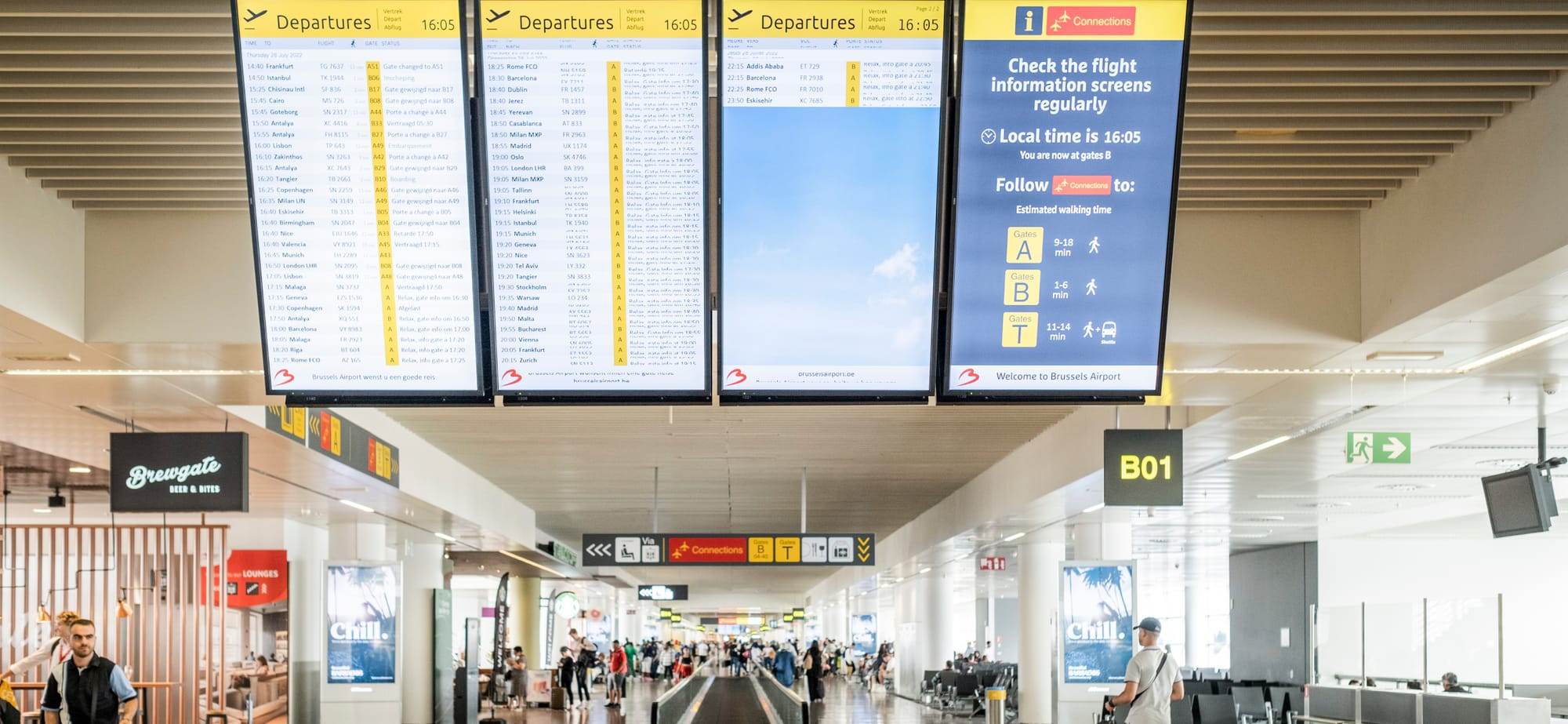The need and opportunity for digital communication channels
Everyone who has visited either a local or an international airport can relate: we all want a smooth journey and as little worrying as possible.
A custom website can serve as a straightforward but underestimated way to share the most up-to-date information with passengers. In addition, airports can also deploy a WhatsApp account which serves the purpose of answering pressing questions in a hyper-personalized way. Brussels Airport Company went a step further, with a chatbot named “BRUce” that is 24/7 providing proactive and personalized customer service. With these digital communication channels in place, the airport was thinking about how it could uplevel the digital experience for passengers.
Seven Beaufort helped the airport with this challenge. Together, we explored how we could improve the digital passenger experience through the optimization and seamless integration of its multiple digital channels.
A field research study to understand the passengers and stakeholders
First things first. To know the requirements for a better experience, passengers and stakeholders were asked about their needs during their journey.
As an airport is a place with many different people, it was necessary to map several personas based on the gathered data regarding operations, commercial activities and experience. Think of (non-)frequent flyers, business vs. leisure, passengers that enjoy shopping and/or drinks and food, border control, friends and family of travelers, … Mapping these personas and multiple journeys brought us a 360-degree view of the airport context and enables us to pinpoint opportunities to improve the overall passenger experience.
Adding value by personalizing the experience
The key feature of the digital airport experience is to provide timely information on flight status and any question passengers might have. However, if we wanted to further step up the game, we needed to be proactive by adding value to each persona at the right moment in their passenger journey.
We applied a three-step approach to solve this challenge.
Firstly, additional personalized features were developed to provide digital assistance for passengers’ top needs. Some examples:
- Showing the way to shops for products or brands of people’s interest.
- Initiating real-life support in case a passenger needs a wheelchair.
- Getting help when your luggage is lost.
Secondly, all the previous is only worthwhile if it happens at the right time.
The digital interaction with the passenger needs to make sense based on the current stage of the journey. We try to make find the right timings to send contextual messages during their passenger journey. We want to know if the traveler has already arrived at the airport, checked in, and passed the security checkpoint or border control, ... With this information, assumptions are made regarding the timing of push notifications.
Finally, this service needs to be as smooth as possible. As there are multiple channels, BRUce becomes more and more important to make these channels work together harmoniously. Think about it as a one-stop shop, where BRUce proactively assists the passenger by providing all relevant information and services based on the traveler’s persona – otherwise spread over multiple digital channels.
What is next
During this project, we have identified more opportunities to further develop the digital passenger experience. Until now, we have mostly focused on the departure journey where we can still add value by using the available data. Think about getting a notification about which luggage belt you need to go to for collecting your belongings. Or having the opportunity to get suggestions for products and being able to buy them via WhatsApp. Not to mention the arrival journey and the non-traveling stakeholder journey.
The goal remains to have Brussels Airport’s channels integrated seamlessly, providing every person traveling or visiting the airport with exactly the right information at exactly the right time.
![[object Object]](https://umsousercontent.com/lib_SgVrTchGksgQdBiV/5to2tmehoshuavn2.png?w=306)

